
Unit testing vs. automation testing might seem a tough dilemma. Is any one of those test modes better? Do you really need to choose between unit testing or automation testing? Or perhaps both unit testing and test automation are necessary?
In the below article, we will deal with the common misconceptions regarding unit testing vs. automation testing. You will learn the main differences between the two and how to make sure that you do not miss anything when building your test suites and automate with confidence.
Is unit testing the same as automation testing?
A very common question asked in Google is whether the unit testing is the same as automation testing. And there seems to be quite a lot of confusion around this topic. So let’s explain what unit testing really is and how it is executed by software teams.
Unit testing
Unit testing is commonly described as one of the types of software testing which verifies if the smaller parts and components of an application are functioning in the way that they are expected to. These small parts are called “units” (hence the name of the unit testing). Unit tests are a separate and quite specific form of testing as the units are tested in complete isolation. This means that they do not interact with each other and do not hold any external dependencies (to, e.g., APIs, filesystem, databases, etc.
It is useful to think of the unit tests as of programs which run tests on other programs. The exemplary workflow of the unit testing is shown below:
Step 1: Software engineers start off by writing unit tests. They use programming language and a unit testing framework for that purpose.
Step 2: Test are discovered and executed by a unit testing runner.
Step 3. The unit tester verifies if (and how many) test have failed or passed and reports (documents) the visual results.
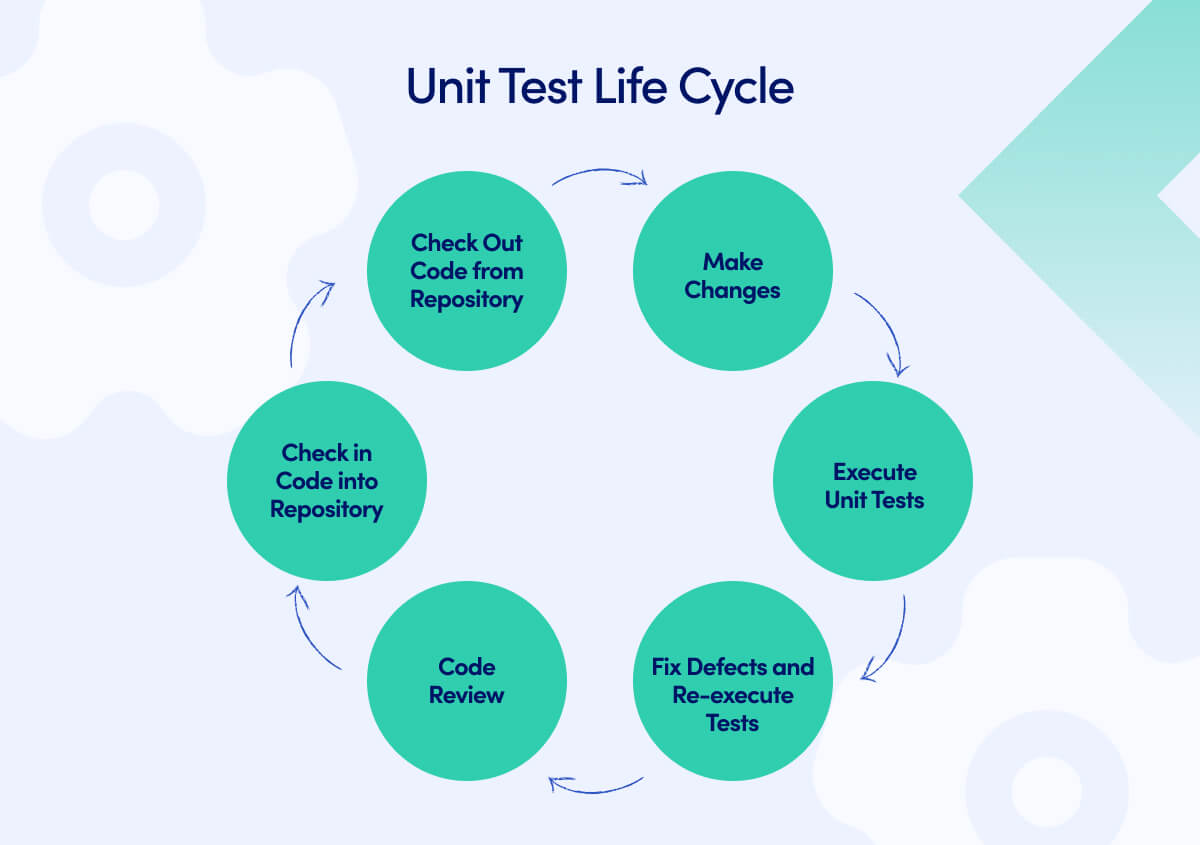
Benefits of unit testing
Why run unit tests at all? Are they really necessary? Take a look at what benefits unit testing entails:
- Unit tests serve as a regression test suite. They are important for the engineers to be confident that nothing will break once the code changes. They alert developers of any unintended consequences of the changes that they introduce.
- Unit test run quickly and so they can be executed multiple times whenever they are needed.
- Unit test are cheap to create and maintain. This is because they don’t require complex setup or test data.
- Unit testing is all about improving quality of your database. You should use it as a tool to improve the quality and performance of any software applications. By running them frequently, developers can fix the detected issues immediately before they cause more serious issues.
- Unit tests make the debugging easier. By writing specific tests that address individual pieces of the code, developers stand much better chance of discovering very quickly what is wrong and where the source of the error is. With unit testing, debugging is much less time consuming (otherwise, developers would need to run manual checks for each piece of code to look for errors.)
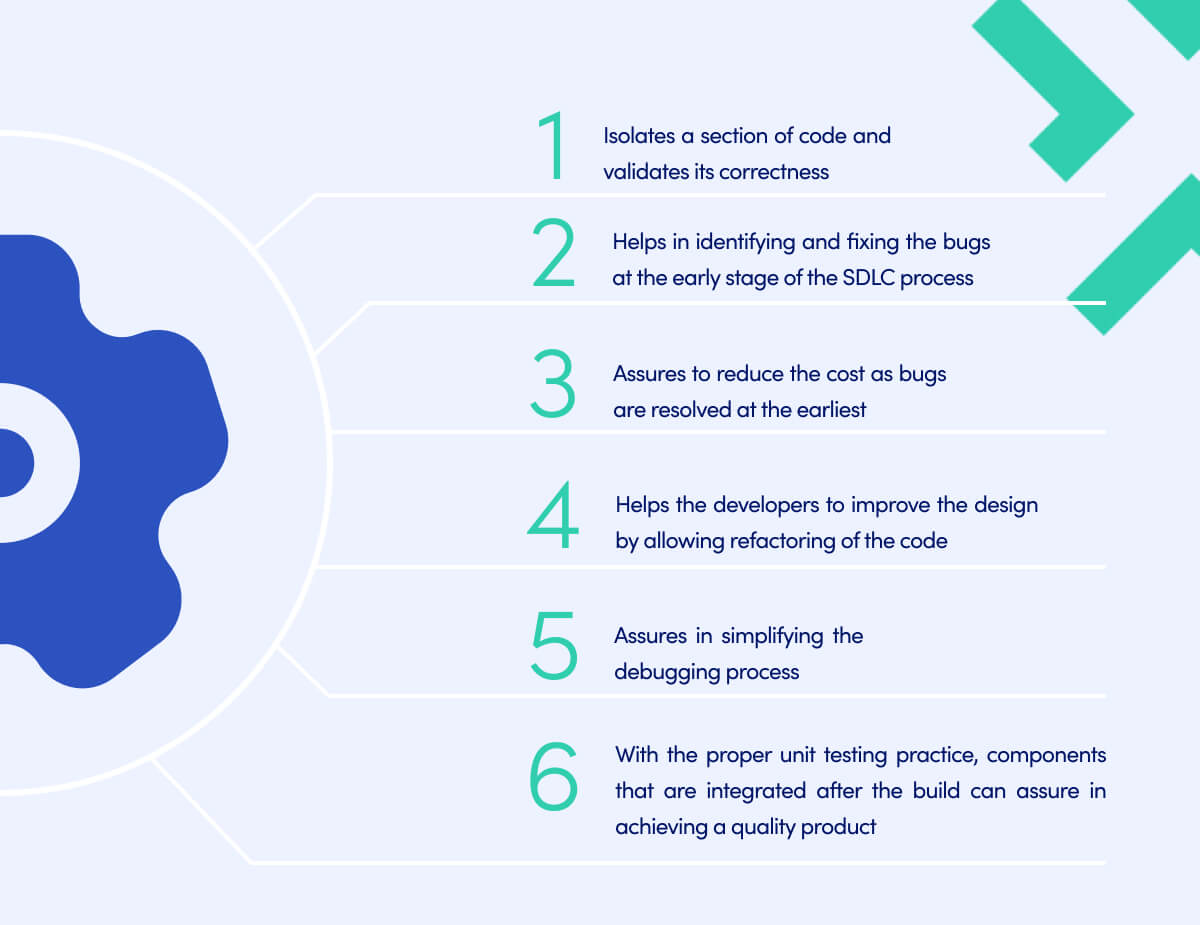
Automation testing – when and why use it
Regardless of the multiple advantages of the unit testing, it is simply not enough to execute unit test only. At the end of the day, unit testing is not capable of catching all possible defect. That is why software teams should leverage other type of test automation.
Let’s take a look to see where test automation should be applied and where it makes most sense to introduce it – both to increase test efficiency, minimize the testing time and maximize the testing project profitability:
- For repetitive and time-consuming test tasks
- For non-functional testing (e.g. load testing and performance testing)
- For UI testing, if lots of platforms or devices are supported
- For parallel testing
- For the main testing flows
- For the rarely changing cases
- If your UI is stabilized
- To avoid human errors
Regardless of the multiple advantages of the unit testing, it is simply not enough to execute unit test only. At the end of the day, unit testing is not capable of catching all possible defect. That is why software teams should leverage other type of test automation.
Let’s take a look to see where test automation should be applied and where it makes most sense to introduce it – both to increase test efficiency, minimize the testing time and maximize the testing project profitability:
- For repetitive and time-consuming test tasks
- For non-functional testing (e.g. load testing and performance testing)
- For UI testing, if lots of platforms or devices are supported
- For parallel testing
- For the main testing flows
- For the rarely changing cases
- If your UI is stabilized
- To avoid human errors
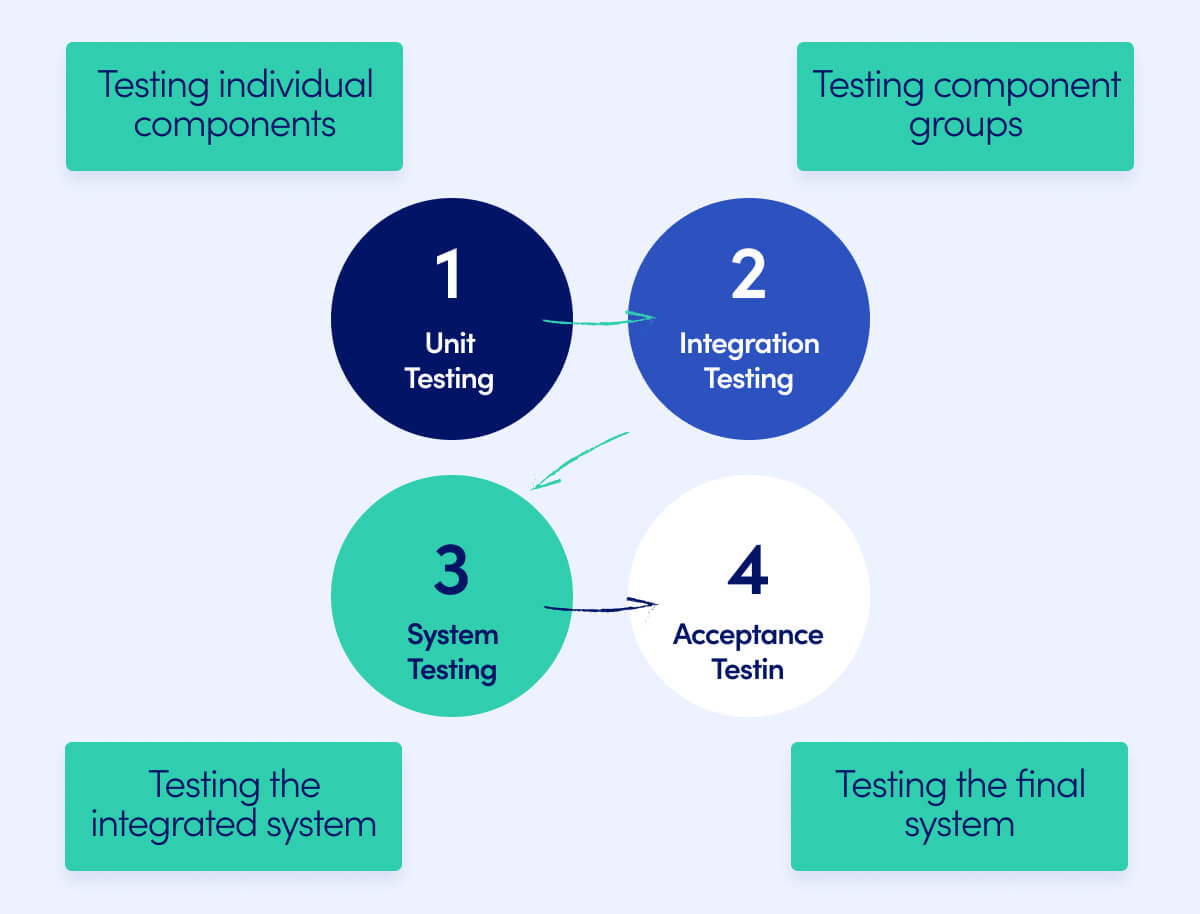
You need test automation to increase your test coverage. Mind you that test coverage is not synonymous with code coverage. Contrary to unit testing, test automation coverage means a broader context: the total of areas, scenarios and concerns. Test coverage relates to all possible aspects of the application that needs to be tested.
Automated testing dramatically increases the test coverage. It allows effective execution of the testing scenarios which would be impractical (if not impossible) to do through manual testing.
For teams (and companies) who have never worked with test automation before, the whole idea of automated testing implementation might seem overwhelming. However, it is mostly due to the misconceptions and myths around the test automation price, efforts and reliability.
Codeless test automation tool (like Executive Automats) offer you 100% guarantee that workflows will be tested easily, in almost no time, with no human intervention and with the highest test coverage. There is simply no point is using unit testing alone as this is not time or cost-effective. Only automated testing, including unit testing, can deliver the effectiveness that is desired.
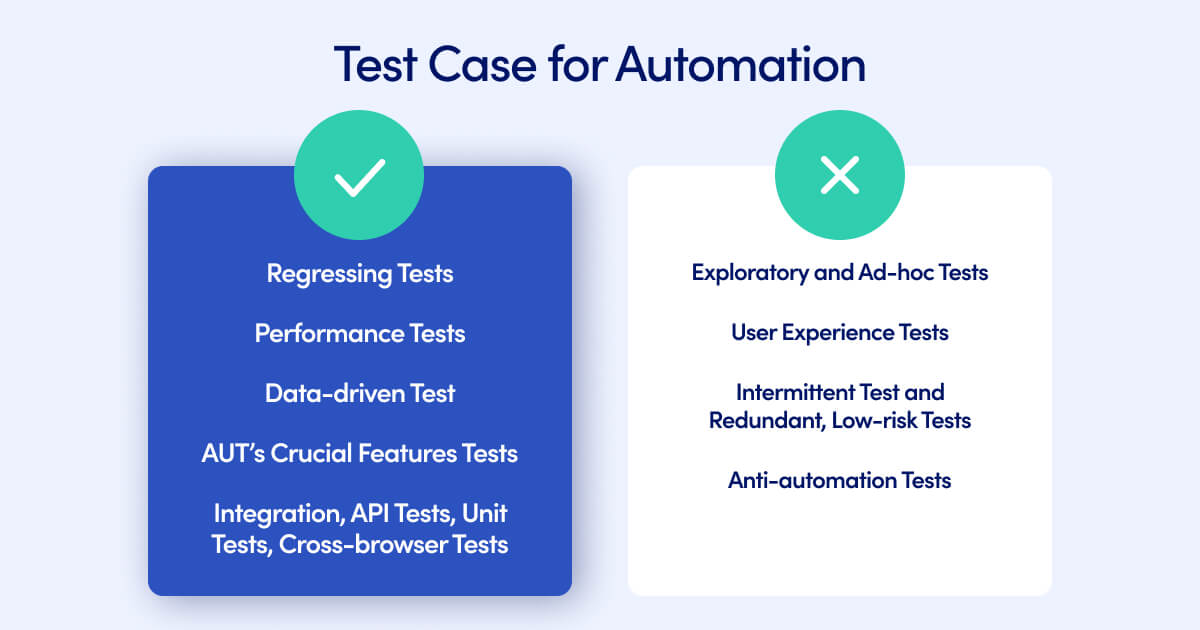
Unit testing vs. automation testing – differences
Although it often happens that the unit testing is used as on opposite of the automation testing, it is not really the case. In fact, it makes little sense to use vs. between unit testing and automation testing as unit tests actually come under automation testing. Automated tests comprise a handful of different test types. These can be: performance testing, integration testing, end-to-end testing and… unit testing, too.
And both unit testing and automation testing share a lot of common characteristics. They are not competitive types. Rather, they focus on slightly different areas.
It is helpful to focus on the main differences between the two in order to fully understand their role:
Scope of testing
The unit testing focuses on checking all the software component one by one, in isolation, to make sure that they function and behave as expected. On the contrary, automation testing does not test units but rather it uses test scripts for testing flows. However, the code itself consist of smaller units to make this type of testing possible.
Purpose
The main goal of the unit testing is to look closely at every single function of the application to deliver the highest code quality. Unit testing is particularly helpful in discovering issues when the testing script is ready. The automated testing focuses on the integrity of the flow and matching it to the specific business requirements.
Actor
The unit testing is performed by development team. They receive immediate feedback on the functionality of their code by running unit tests. This way, they know whether they should progress with testing or whether code needs rewriting because the output does not much the expected outcome.
Automation testing is not done by developers but by quality assurance specialists who are experts in test automation. They define the whole test strategy which is scalable for the project test coverage. They run tests to estimate whether all the flows serve the main testing project purpose.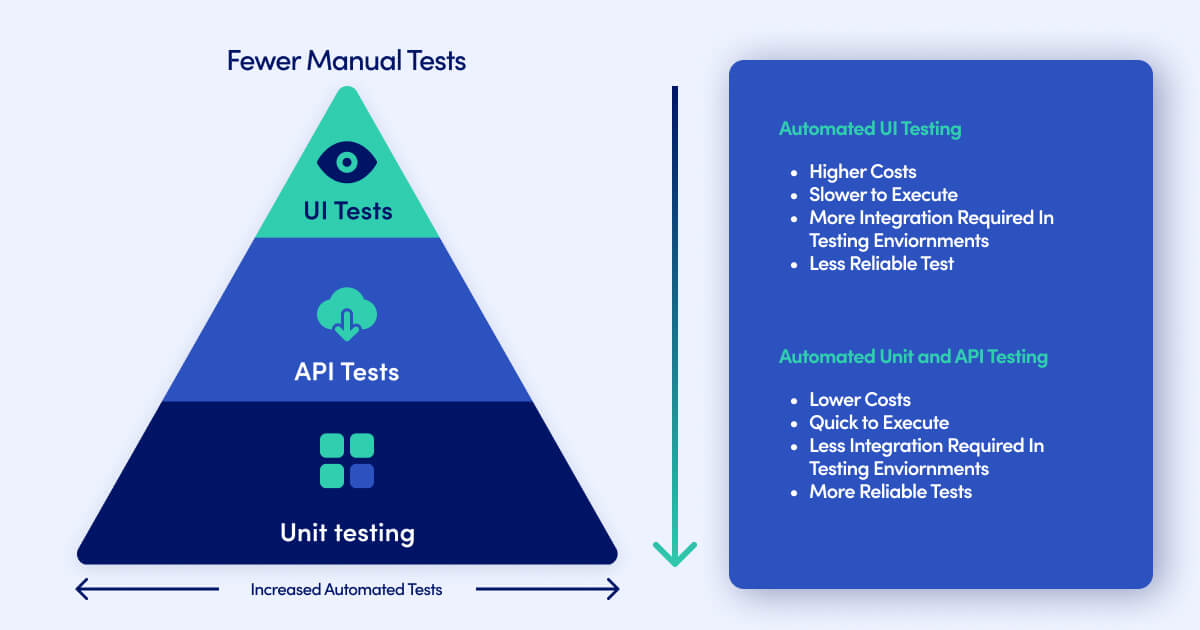
Unit testing vs. automation testing – conclusion
To sum it up, automation testing – although possible to do without unit testing – should include it for the best project quality. And the other way round – even if you run all test units with no errors, you still need test automation to verify if there are no defects in the complex use-case scenarios.
There is no need to tell which one is better. Instead of considering unit testing vs. test automation, it is much more reasonable to see those two mode of testing as complementary. And it is necessary to plan test automation with the view of running unit testing as part of the testing project. By incorporating unit testing into your automation test suite is a guaranteed way to make sure that the final software product is of the highest quality and corresponds to business and users’ expectations.
